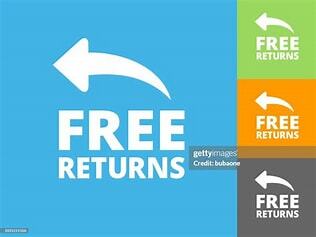Value: How To Determine Price vs Value
Is The Cost Of What You See A Good Value:
Since any given product category of items that are seen on this site have competitors from just about every corner of the planet, with price ranges that vary widely, how to determine value versus price? Hopefully, the following short primer will help.
Determining value is a combination of materials, design, construction techniques, customer service, durability, longevity, appearance and price.
-
Materials:
-
Leather (and canvas) quality varies widely. This is important because the quality will affect performance, durability and life of the product.
-
Types of leather: Full grain leather is the outer most portion of the hide that leather is made from. That part of the hide is the strongest since it is the part that faces the environment. It is not uncommon to see small artifacts in the hide. This illustrates that the leather is in fact the outer most, or strongest, part of the hide. Our leather items are full grain leather. Actual leather is composed of Full Grain, Top Grain (where the outer most portion of the hide can be sanded or processed to provide a smoother look) and genuine leather. Each one of these three categories yields less stronger portions of the leather as full grain is the best and strongest, followed by top grain and lastly genuine leather. Full gain is the strongest and genuine leather the weakest. All other claims of types are leather are manufactured or modified terms in some way. Actual leather is one of these three categories, when you see other names, those other names are not recognized as industry accurate terms.
-
Hides: Hides are typically a by-product of the meat industry. The North American Jumbo Steer is considered to provide the best source of the majority of cow leather in use today. Since animal skin is the source of leather there is a wide variety of types to choose from. Examples are things like Alligator, Buffalo, Cow and so on. Hides are then graded based on the quality of the hide. Cow leather is far and away the most dominate form of leather.
-
Tanning: There are multiple methods of taking a hide and turning it into leather. Some methods go back millennia. Principally today most leather tanning falls into three major categories:
-
Vegetable Tanning: This process uses tree bark and / or other plant material to transform the hide into leather. This process is "softer" and thus takes longer. It is less invasive on the fibers in the hide thus yielding a stronger leather. This process is also more eco-friendly since it uses natural substances and requires less process to clean up after tanning. This process is organic and sustainable if done properly. This process also yields a more attractive and stronger leather. Over time vegetable tanned leather's color will improve, which is called patina.
-
Chrome (Chemical)Tanning: This process uses (typically) chromium salts to transform a hide into leather. It is much faster and thus often results in a lower cost leather. This process also is more heat tolerant. This allows certain types of industries (auto, furniture etc.) to use this method since the use of heat to form the leather allows for a better fit. The effluent and solids from this non vegetable tanning process have to be processed to be exported from the tannery, compared to vegetable tanning which is clean and organic.
-
Re-Tanning: This process will typically use a chrome tanning process as a first step and then use some soft or natural substance (tree bark, fish oils) to re-tan the hide. This yields some different characteristics and can retain properties of different tanning methods. Regardless of what other terms are used when starting with chromium salts (typically hexavalent chromium), the resulting hide will always be a chrome tanned hide by analysis and measurement. The effluent and solids from this process have to be treated to be exported from the tannery.
-
Design
-
Design, to us, is the usability of the item. In day-to-day use does the item fulfill its intended use as an extension of the person (or place) using it.
-
Construction:
-
How is the item put together? On this site the items that you see (excepting the supply items in accessories) are built by artisans from the hide on up. We use the best available materials that we can find. When we are building a given item we focus on the strength, durability and usefulness of each item. Using better materials like bonded, heavier nylon for stitching and others. We do not our-source or off-shore any process.
-
Customer Service:
-
We back what we do. And we are a smaller firm by design, the artisans at our firm are the people you talk to. So, if you contact us, it will not be a customer service representative but one of the owners who is also an artisan.
-
Durability:
-
Leather, being a hide does not mean that a given item can be subjected to any use without affect. But, to us, it does mean that the item should be able to withstand long term use in its intended environment.
-
Longevity:
-
To us means the item should be able to last in normal use. In today's world-wide marketplace there is a very wide variety of items in just about all categories that are purposely designed to be throw away items. Some of the suppliers build items to a price point without considering length of service or durability. True value to us is time. That is, do you have to replace the item because it is designed to fail at some point, or does it last as it should? So, if a given item that has built in obsolescence in order to get a lower initial price point, is it really less costly?
-
Appearance:
-
Better leather will improve in appearance with age. This is typically referred to as patina. This is also a way to know if you have true full grain vegetable tanned leather.
-
Price:
-
Just because a given item has a higher price does not mean that it is a superior item. A value-based price should include all of these items mentioned above. We often see expensive leather items that DO NOT explain the above characteristics that we include in all of the items we build.




